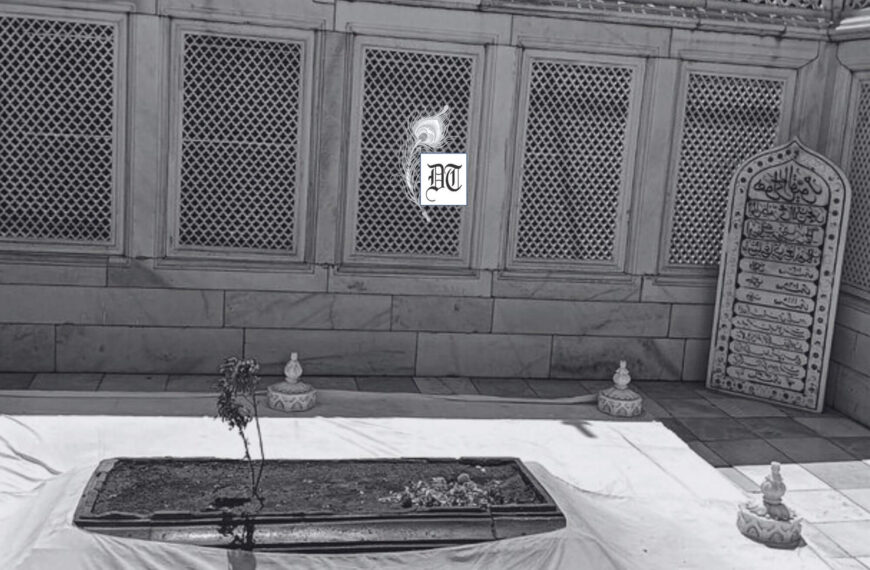Since thousands of years poisons have been both a deadly threat and a protective tool used around the world. Poisons have played a dominant role in our history and legends, persisting both as evil potions and curative antidotes. Tapati traces its antiquity, along with its recent use, in the regular column, exclusively for Different Truths.
Recently, the world is stirred over the alleged use of toxic nerve agent on two British agents though the exact name and nature of the poison is not made public. But it has created serious uproar in political scenario across lands.
Since thousands of years poisons have been both a deadly threat and a protective tool used around the world. Poisons have played a dominant role in our history and legends, persisting both as evil potions and curative antidotes.
Historical findings prove that while men used conventional weapons such as axes and clubs, and later swords, they sought more subtle, destructive means of causing death, something that could be achieved through poison. Thus poison was discovered and was used by ancient tribes and civilisations as a hunting tool to quicken and ensure the death of their prey or enemies. Grooves for storing or holding poisons have been found in their hunting weapons and tools. Certain parts of Africa, South America and Asia, the use of poison as an actual weapon of hunting still endures.
In fact, history presents plenty of famous poisonings, few of which were ever solved. In 399 B.C., ancient Greek philosopher Socrates fatally drank hemlock after being sentenced to die by a jury. Hemlock was a popular one with the ancient Greeks, who used it to kill off their prisoners.
The earliest references to toxic weapons are contained in ancient Greek myths about Hercules using the venom of the Hydra monster to poison his arrows. Later, Homer’s epics implied that poisoned weapons were used during the Trojan War.
…the use of poison grew more advanced many of these ancient peoples began forging weapons designed specifically for poison…
As the use of poison grew more advanced many of these ancient peoples began forging weapons designed specifically for poison enhancement. At the time of Roman Empire, one of the more prevalent uses was assassination. As early as 331 BC, poisonings executed at the dinner table or in drinks were reported, and the practice became a common occurrence. The use of fatal substances was seen among every social class; even the nobility would often use it to dispose of unwanted political or economic opponents.
In Roman times, poisonings would have been used for self-advantageous reasons in every class of the social order. Roman emperor Nero is known to have favored the use of poisons on his relatives, even hiring a personal poisoner. His preferred poison is said to be cyanide.
Nero’s predecessor, Emperor Claudius is said to have been poisoned by his wife, Agrippina, using aconite in a plate of mushrooms. Some report that he died after prolonged suffering following a single dose at his evening meal, while some say that he recovered somewhat, only to be poisoned once more by a feather dipped in poison which was pushed down his throat pretending of helping him to vomit. The past has witnessed the use of Aconite for shedding blood. Nazis use the poison to lace their bullets. Ancient Greek shepherds laced darts with aconite to kill wolves and protect their herd. The Harry Potter series shows Severus Snape using aconite to convert Remus Lupin into a werewolf.
Mithridates VI, king of an ancient Hellenistic state around 114–63 BC, lived in constant fear of being assassinated by poison and became a pioneer in the search for a cure for poisons. In his position of power, he was able to test poisons on criminals facing execution, and then if there was a possible antidote. But he was paranoid to the point that he administered daily amounts of poisons in an attempt to make himself immune.
In medieval Europe, special shops were there to sell various medicinal wares and they were open to the public; substances were available that were traditionally used for curative purposes also employed for more sinister ends.
Egyptian knowledge and use of poisons can be dated back to around 300 BC. They are thought to be the first to master distillation and to manipulate the poison that can be retrieved from apricot kernels.
Cleopatra is said to have poisoned herself with an asp. Prior to her death, she was said to have sent many of her maidservants to act as guinea pigs to test different poisons.
“The ‘Gu’ was a common poison in ancient China. It was made by placing venomous animals into a large pot together. These animals included snakes, toads, scorpions, spider, and centipedes. After a period of time passed, the pot was opened and the surviving animal was deemed the most venomous or poisonous. It was subsequently ground up and used as a poison.”
Kautilya himself appears to have been very knowledgeable about herbs, roots, animal remains, natural toxins and other organic matter …
Indian surgeon Sushruta defined the stages of slow poisoning and the remedies of slow poisoning. He also mentioned antidotes and the use of traditional substances to counter the effects of poisoning. Kautilya was an adviser and prime minister to the first Maurya emperor Chandragupta around c. 340–293 BC. Kautilya suggested employing means such as seduction, secret use of weapons, and poison for political gain. He also urged detailed precautions against assassination—tasters for food and elaborate ways to detect poison. Kautilya himself appears to have been very knowledgeable about herbs, roots, animal remains, natural toxins and other organic matter that could potentially harm and subvert the enemy.
One interesting method of poisoning is mentioned by Kautilya as: “Agents disguised as vendors of cooked meat, cooked rice, and wine should sell poisoned items to the enemy alluring them with cheap prices or credit sales. Women spies and their children, purchasing wine, milk, curds, butter or oil, should pour them into their own vessels already containing poison and then return them complaining of poor quality.”
Among the long list of poisons, Cyanide seems to be extremely popular; spies use cyanide pills to kill themselves when caught. It is found in a great variety of substances like almonds, apple seeds, apricot kernel, tobacco smoke, insecticides, pesticides and the list goes on. Murder, in this case, can be blamed on a household accident. Hydrogen cyanide – it was the agent used by Nazi Germany for mass murders in gas chambers during the Holocaust.
Nazi war leader Herman Goring used cyanide to kill him the night before he was supposed to be hanged. Adolf Hitler also took a pill of cyanide and later shot himself in the fall of Berlin.
Belladonna comes from a plant and the name is derived from Italian and means beautiful woman.
Belladonna comes from a plant and the name is derived from Italian and means beautiful woman. That’s because it was used in the middle-ages for cosmetic purposes – diluted eye-drops dilated the pupils, making the women more seductive. But if ingested, a single leaf is lethal and that’s why it was used to make poison-tipped arrows. In the past, it was used as an anaesthetic for surgery while the ancient Romans used it as a poison. Primarily it was used as a remedy for few health issues.
Arsenic has been called “The King of Poisons”, for its discreetness and potency – it was virtually undetectable. It has taken many famous lives: Napoleon Bonaparte, George the 3rd of England and Simon Bolivar to name a few. On another note, arsenic, like belladonna, was used by the Victorians for cosmetic reasons. A couple of drops of the stuff made a woman’s complexion white and pale. In 1996, a chemistry professor at Dartmouth College, New Hampshire, spilled a drop or two of the poison on her gloved hand – it went through the latex glove, symptoms appeared four months later and ten months later, she died.
Ricin is one of the most dangerous poisons in the world. It can be extracted from the seeds of the castor oil plant. Once it enters the body, the central nervous system, kidneys, liver and other organs will fail followed by death. Ricin became famous in the Georgi Markov umbrella murder case in 1978. In 1978, Georgi Markov, a prize-winning Bulgarian author who had angered authorities and fled to London, was standing at a bus station when he felt a prick in the back of his leg; by the umbrella, he was carrying, Bulgarian communist agent fired a tiny bullet with the substance into the defector’s leg.
While running for the Ukrainian presidency in 2004, Viktor Yushchenko became deathly ill. His face was partially paralyzed and covered in hideous lesions that transformed into horrific looks. Tests later revealed that he had been poisoned with pure dioxin, a component of Agent Orange.
In 2011, Chinese billionaire Long Liyuan died after eating a bowl of cat-meat stew laced with gelsemium, a rare plant toxin. The most potent type of gelsemium grows only in Asia, where it is called “heartbreak grass.”
Polonium is a radioactive poison, a slow killer with no cure. The most famous case of polonium poisoning is that of ex-Russian spy Alexander Litvinenko found in his cup of tea.

More recently in 2017, two women sprayed one toxic nerve agent into the face of Kim Jong Nam, killing the half-brother of North Korea’s dictator, Kim Jong Un. The assassination took place at the Kuala Lumpur International Airport. Kim Jong Nam died on the way from the airport clinic to another hospital shortly after the attack.
Quite a few poisons are based on plants which were originally used for medicinal purpose. But people started using them for the heinous purpose, to kill treacherous political rivals, revenge and cold-blooded murder. So people started growing the poisonous herbs in seclusion.
We go around gardens enjoying the beautiful flowers and their fragrance. But there exist special gardens where toxic and deadly plants can thrive and avoid extinction while being admired by the visiting public. One famous poison garden can be found in on the grounds of an English castle. The curators maintain plants like deadly nightshade and hemlock. The poison garden has been described as: “Inspired by the legendary botanical gardens in Padua where the Medicos plotted the untimely, frothing ends of their enemies, an English duchess created this garden, dedicating it entirely to flora which is deadly and/or narcotic.”
Shakespeare penned his famous pieces with a penchant for poison-tipped endings for his characters
In course of time, scintillating incidents of poisoning became an interesting theme in literature; Shakespeare penned his famous pieces with a penchant for poison-tipped endings for his characters. Hamlet’s father died from poison poured into his ear as he slept and a whole army was poisoned in Macbeth. Snow White’s demise after eating the poison apple became a household tale of children. Various human emotions like jealousy, power, personal revenge etc. playing the main factor behind each poisoning case created a wide diaspora of stories around intelligence and detectives.
Though poisoning dates back millennia the current trend of newer methods seems to be a result of recent advances in technology. In real-life, academics still debate whether it is was arsenic or the asp that did for Cleopatra, a toxic wine that killed Alexander the Great, or poisonous secretions in his wallpaper that accounted for Napoleon. But the cruel reality is: the whole world today stands witness to another story of poisoning resulting into big power games and waiting to see the remorseful results concerning not individuals but nations and lands on the face of another impending cold war.
Picture design Anumita Roy
#PoisonsInHistory #CivilisationsWhichUsedPoison #UseOfPoison #DeathAndCureWithPoison #NowAndThen #DifferentTruths







 By
By

 By
By